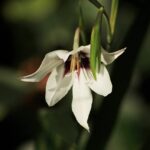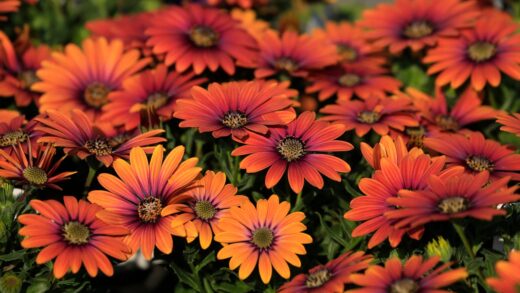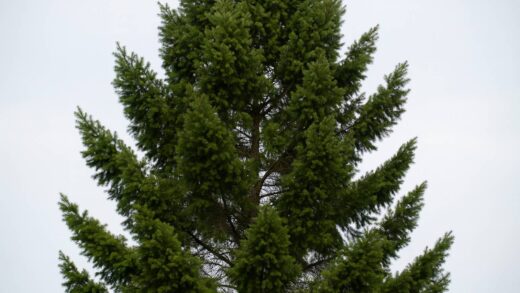Understanding and providing the correct light conditions for lily of the valley is one of the most fundamental aspects of its successful cultivation. This classic woodland perennial has evolved to thrive on the forest floor, a unique environment with its own distinct light dynamics. Its entire life cycle is beautifully synchronized with the changing canopy of deciduous trees above it. Getting the light right is not just a matter of preference for the plant; it is a critical requirement that directly influences its growth, its ability to flower, and its long-term health and ability to spread.
The ideal light for lily of the valley is often described as “dappled shade” or “partial shade.” This is not a static condition but one that changes throughout the day and across the seasons. The plant craves the bright, indirect light it receives in the spring before the trees have fully leafed out, as this is when it performs the bulk of its photosynthesis and energy production for the year. As summer progresses, it requires the protection of deep shade to shield it from the intense heat and direct sun.
Placing lily of the valley in an incorrect light exposure is a common reason for it to fail in a garden setting. Too much direct sun will scorch its delicate leaves and dry out the soil too quickly, stressing the plant and inhibiting its growth. Conversely, while it is shade-tolerant, placing it in perpetual deep, dark shade will result in lush foliage but a disappointing lack of its signature, fragrant flowers. The key is to find that perfect balance.
By carefully observing the light patterns in your garden and choosing a location that mimics the conditions of a natural woodland, you can provide the optimal environment for this plant to flourish. This thoughtful placement is a simple yet profound step that sets the stage for a beautiful, healthy, and enduring colony of lily of the valley.
The ideal woodland light setting
The perfect location for cultivating lily of the valley is one that faithfully replicates the light conditions of its native woodland habitat. The ideal spot is underneath a high canopy of deciduous trees, such as oaks, maples, or birches. In this setting, the plant experiences a dynamic and beneficial light cycle throughout the year. In the early spring, before the trees’ leaves emerge, the ground is bathed in bright, filtered sunlight. This period of high light exposure is crucial.
More articles on this topic
This early spring sun provides the energy the plant needs to push up its new shoots, unfurl its leaves, and produce its profusion of fragrant flowers. It is during this window of time that the plant undertakes the majority of its annual photosynthesis, creating the sugars that will not only fuel the current season’s growth but also be stored in the rhizomes for the following year. Without this period of bright, indirect spring light, the plant’s energy budget will be severely limited.
As spring progresses into summer, the leaves on the deciduous trees overhead will fully expand, creating a dense canopy. This canopy then provides the deep, cooling shade that lily of the valley requires during the hottest months of the year. This summer shade is just as important as the spring sun. It protects the plant’s relatively thin leaves from the scorching intensity of the afternoon sun and helps the soil to retain the consistent moisture that is vital for its health.
This combination of bright spring light followed by summer shade is the perfect formula for success. Locations on the north or east side of a building can also provide similar conditions, receiving gentle morning sun and then being shaded during the harsh afternoon hours. Careful observation of your garden’s specific light patterns is the best way to identify such a privileged spot.
The consequences of excessive sun exposure
Placing lily of the valley in a location that receives too much direct sunlight is a recipe for stress and poor performance. While the plant needs bright light in the spring, it is not adapted to withstand the intensity of direct sun, particularly during the hot afternoon hours of summer. The most immediate and obvious sign of excessive sun exposure is sun scorch on the leaves. This appears as yellow or brown, dried-out patches, and the edges of the leaves may become brown and crispy.
More articles on this topic
Beyond the cosmetic damage to the foliage, too much sun has a more profound physiological impact on the plant. The intense light and heat increase the rate of transpiration, which is the process of water evaporating from the leaves. This can quickly lead to dehydration and drought stress, even if the soil is kept moist. The plant’s leaves will wilt and droop during the day as they lose water faster than the roots can absorb it.
This constant stress from heat and dehydration will significantly weaken the plant over time. It will be unable to photosynthesize efficiently, leading to stunted growth and a reduced ability to store energy in its rhizomes. A plant that is chronically stressed by too much sun will produce fewer, if any, flowers, and its ability to spread and form a dense colony will be severely hampered. The entire patch will look sparse, sickly, and struggle to survive.
In a location with full sun, the plant will likely enter a state of premature dormancy. The foliage may die back to the ground as early as mid-summer in an attempt to conserve resources and protect the underground rhizomes. While this is a survival mechanism, it means the garden is left with a bare patch for the rest of the season, and the shortened growing period further weakens the plant for the following year.
The impact of deep, constant shade
While lily of the valley is celebrated as a shade-loving plant, it is crucial to understand that there is a significant difference between the bright, dappled shade it prefers and deep, constant shade. While the plant can certainly survive in very shady conditions, such as under evergreen trees or in the dense shadow cast by a building, its performance will be compromised. The primary casualty of insufficient light is the plant’s ability to flower.
In a location with deep shade, the lily of the valley will often produce a lush, beautiful carpet of deep green leaves. The lack of light stress and the cool, moist conditions can encourage vigorous vegetative growth. However, without the bright, direct sunlight of early spring to power its energy production, the plant will not have the sufficient resources required to form flower buds. A gardener who plants it in deep shade may be rewarded with a lovely groundcover but will be disappointed by the near-total absence of the iconic white, bell-shaped flowers.
This occurs because flowering is a very energy-intensive process for a plant. When light is the limiting factor, the plant must prioritize its resources. Its primary goal becomes survival and the maintenance of its vegetative parts—the leaves and rhizomes. It will channel all of its limited energy into producing large leaves to maximize the capture of what little light is available, leaving no surplus energy for the “luxury” of reproduction through flowering.
Over time, a colony growing in excessively deep shade may also become less dense. Although the individual leaves may be large, the rhizomes may not have enough energy to spread as vigorously and produce as many new pips each year. Therefore, if flowering is a primary goal, it is essential to ensure the chosen location receives at least a few hours of bright, indirect, or dappled sunlight, especially during the spring months.
Adapting to different garden exposures
Successfully siting lily of the valley often involves a practical understanding of how different garden exposures affect light conditions. An east-facing location is often ideal. In this exposure, the plants receive several hours of gentle, direct morning sun. This is enough to fuel their growth and flowering, but they are then protected and shaded from the much more intense and potentially damaging sun of the afternoon.
A north-facing location is another excellent choice and is often considered the classic placement for shade-loving plants. While it will not receive much, if any, direct sunlight, the bright, indirect light in a northern exposure is often sufficient for lily of the valley, especially if the area is open to the sky. It will provide the cool, sheltered conditions that the plant enjoys and will typically support healthy foliage and a reasonable amount of flowering.
A west-facing exposure can be challenging for lily of the valley. While it is shaded in the morning, it receives the full force of the hot afternoon sun. This is generally too intense for the plant and can lead to sun scorch and drought stress. If a western exposure is the only option, it is crucial that there is a significant source of shade, such as a large tree or structure, to block the direct sun during the hottest part of the day.
A south-facing location is generally the least suitable for lily of the valley in most climates, as it receives the most prolonged and intense sun exposure throughout the day. It would be very difficult to keep the plant properly hydrated and prevent its leaves from burning in such a spot. The only exception would be if the southern exposure is heavily shaded by a dense canopy of trees or a permanent structure, effectively converting it into a shaded environment.


















